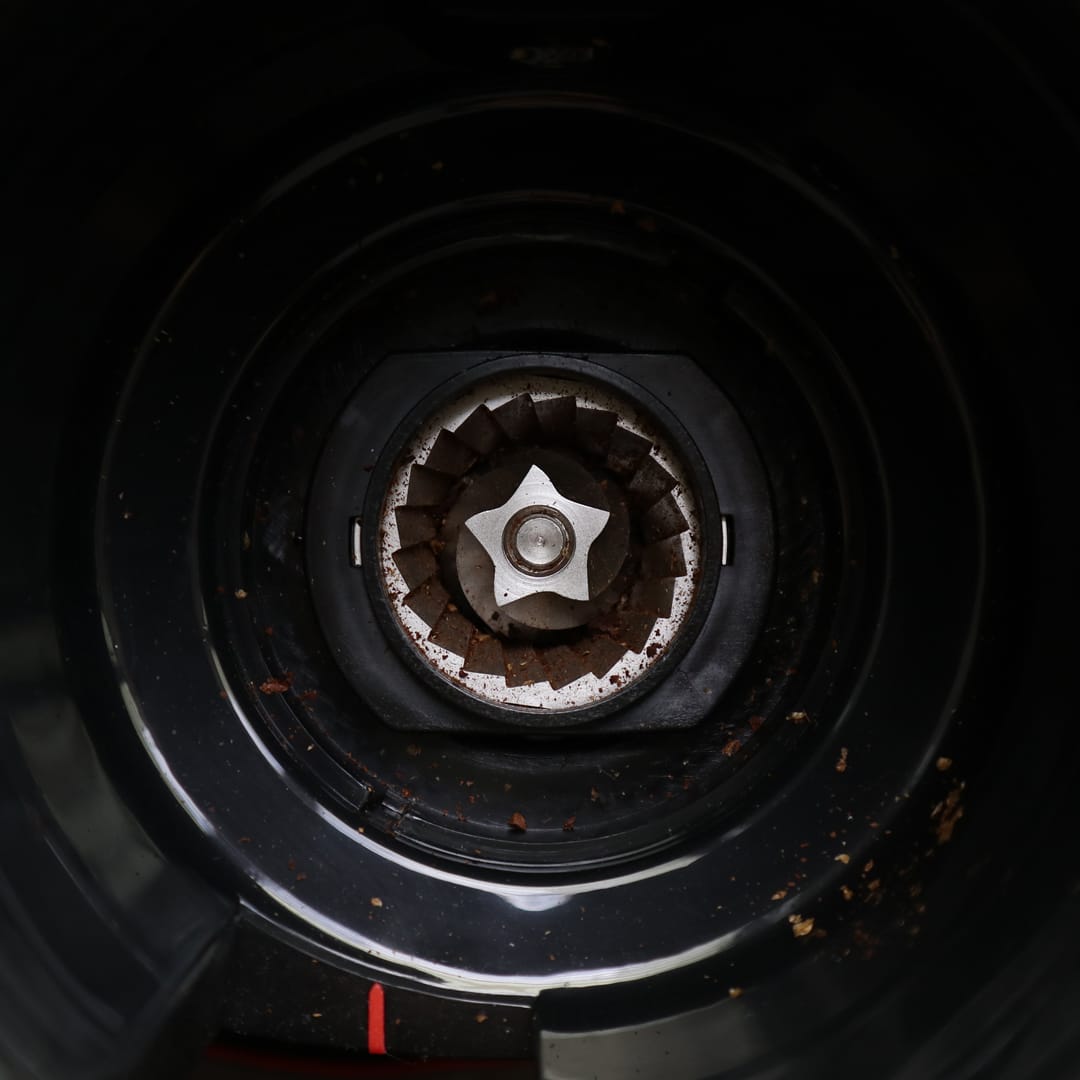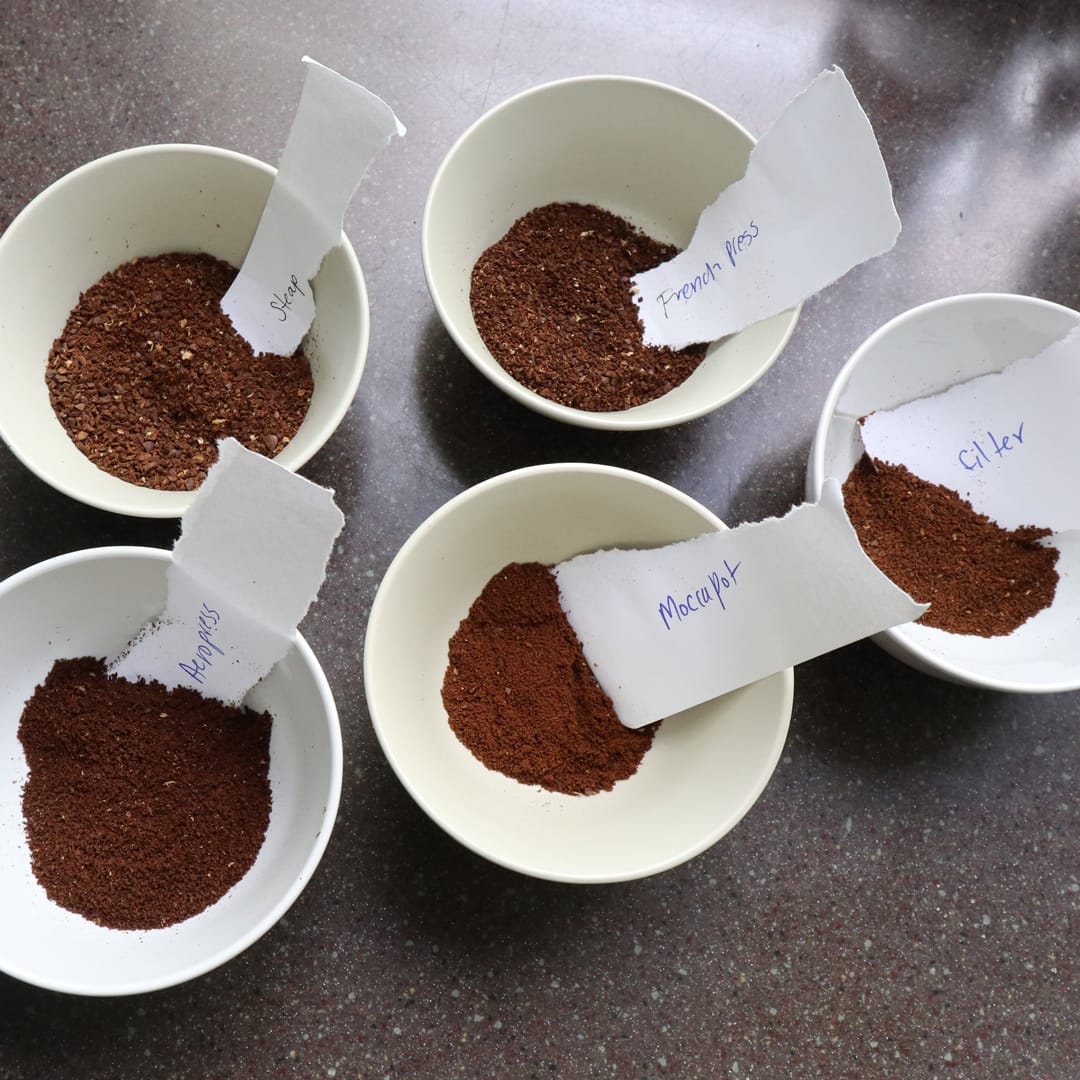When thinking about how to improve your coffee brewing at home, one of the first things an expert will ask is what coffee grinder are you using. Then they will probably suggest that you use a burr grinder (if you aren’t already). I’ll be honest and say that I didn’t have a clue that there was such a difference! Now, a couple years into my brewing journey, I know… a blade grinder only chops up beans so you get a range of ground sizes.

A burr coffee grinder, on the other hand, uses two surfaces that rotate and pulverise the beans into grounds. This produces grounds that are mostly all the same size depending on what setting you’ve used on your coffee grinder.

Why is your coffee grinder so important?
When making coffee, second to the actual coffee bean is the grind size. You can only get a perfect brew when your ground beans are complementary to the brewing technique. And then, you can further improve on the flavour if your grounds are all of the same size. This means that precision coffee grinding helps you achieve that beautifully clean and flavourful cup – the holy grail of all coffee makers alike. Find out more in our Why Grind Size Matters post. Ultimately, this is why I love my coffee grinder so much. It helps me get closer to that perfect cup of coffee each and every time.
What’s wrong with blades?
In actuality, there is nothing wrong with blades… if you don’t mind a bit of inconsistency in your brew. And if you don’t mind your beautiful coffee beans being chopped up into random sized pieces. Blade grinders don’t really “grind”, they cut and chop coffee beans into small pieces. They also create more heat as you’re blending your beans to size which compromises some of the flavour. Because blade grinders produce inconsistent ground sizes, it makes flavour extraction more unbalanced than with a burr grinder. In other words, burr grinders produce more uniform grounds resulting in more consistent extraction and balanced flavour.
I suppose the thing to remember with a blade grinder is that while it breaks down the coffee, it really chops the beans into random sized particles. So if you blend long enough, you’ll get a finer consistency, however, it would probably still have bigger sized chunks and smaller ones mixed up together. On the other hand, if your choice is between pre-ground coffee and grinding your coffee fresh, even with a blade grinder, then grind your coffee fresh.
Beautiful burrs
Take a look inside my Wilfa Svart Aroma Grinder. It’s a burr grinder that pulverises my beans into generally even sizes depending on which setting I’ve picked. What I like most about my Wilfa is that it is virtually dummy proof… while at the same time, it gives the impression that I really know what I’m doing! There are 17 different dial settings if you really want to be precise. For me, the easy to read settings for the most popular brew methods are good enough. Clearly labelled on the dial itself is Moka pot, Aeropress, Filter, French Press and Steep. All the way in between there are additional dial dots so if you reeeaaally want to dial it in like a pro, you can.
Sleek and modern, the Wilfa Svart Aroma Grinder fits beautifully into my kitchen without taking up too much space on my countertop. Best of all, it has helped me brew consistently delicious cups of coffee.
Watch this head to head review video of the Wilfa vs Baratza Encore and let us know if the Wilfa is for you.
Check out the Wilfa and our range of grinders!
This article was written by Angela Manners, editor of Vanilla Beige. She is a coffee lover, food eater, storyteller, picture taker and loves finding an interesting story and talking to people about what they are passionate about.



